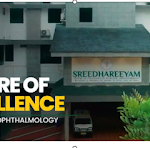The NSF’s Directorate for Computer and Information Science and Engineering (CISE) has christened its new initiative GENI—short for Global Environment for Networking Investigations. And like the uncorked magician whose name it shares, the transformation could be eye-opening. The group intends to look at all sides of the network. In their words, “The GENI Research Program will build on many years of knowledge and experience, encouraging researchers and designers to: reexamine all networking assumptions; reinvent where needed; design for intended capabilities; deploy and validate architectures; build new services and applications; encourage users to participate in experimentation; and take a system-wide approach to the synthesis of new architectures.”
So what will the transformed Internet look like? Will it still break information apart into separate packets, shoot them around the world (many of the pieces taking different routes), and reassemble them on your computer at the end point of the transmission? Will e-mail still be the plague route of choice for viruses, worms, Trojan horses, and evil bots? And what about multimedia—when will that happen in a big way? Early predictions by CISE (listed as goals in its announcement) include security that’s built into the architecture. The original Internet was created by a community of scientists who shared information without regard to security. Security was an add-on after the Arpanet grew into the Internet, and, as we all know, there have been problems. A network with security integrated into its architecture would be an improvement. The CISE document also looks to a time when a new design will “enable the vision of pervasive computing and bridge the gap between the physical and virtual worlds by including mobile, wireless, and sensor networks.” Not quite the Matrix, but a step in the direction.
Other goals of the research group include:
• Enable control and management of other critical infrastructure;
• Include ease of operation and usability; and
• Enable new classes of societal-level services and applications.
Building Pervasive Computing
The CISE intends to create both a test facility and a research program. It won’t be alone in its efforts because there are a number of experimental Internets already, including Internet2 (www.internet2.edu/about/), the National LambdaRail (www.nlr.net/), and PlanetLab (www.planet-lab.org/). But with the NSF and national grant money behind them, the engineers, educational institutions, and agencies involved in this project have some momentum at the start. CISE also intends to encourage large-scale participation by ordinary Internet users. The “how” in the plan gets down to very basic issues of networking and information transmission. The GENI project will “investigate network complexity, scalability, and economic incentives” in order to “develop new network architecture theories.” The planners also want to create new core functions for the Internet by “going beyond existing paradigms of datagram, packet and circuit switching; designing new naming, addressing, and overall identity architecture, and new paradigms of network management.” They’re not going to be working around the edges.
All of which invites the question, When will this happen? Well, if someone could answer three questions, the genie could probably be released very soon. The questions are a bit tricky, though.
1. How serious is the current administration and Congress about innovative technology? (The project could cost more than $300 million.)
2. Can wireless networks be made secure?
3. How long does it take in a gaslit world to invent something like a light bulb?
Hopefully, GENI’s next major announcement will be the “Open Sesame” that unlocks a pervasive, quick, and secure environment.
IMANET














